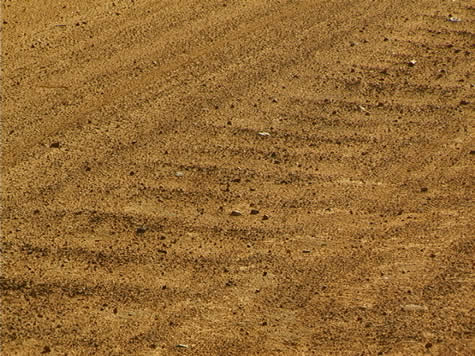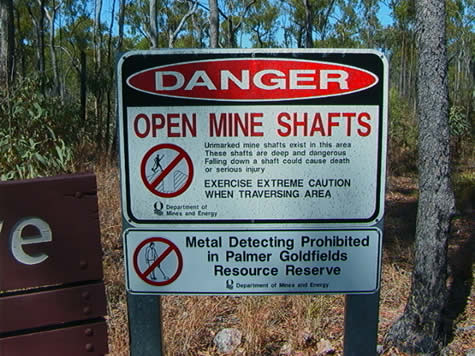Corrugated Roads
Tiger Creek to Lake Emma
67 km
The x360 team pulled out of our rainforest camp a bit later than we wanted, about 8:45am. The road surface was hard-packed red soil for the first hour or so, until we turned up the Battle Camp Road towards the Normanby River. Crister, who was leading the team for the day with the topographical maps and GPS, let us know that the next ten kms to the river would lead us through a small range of mountains. No worries, hills aren’t bad, we thought. But the road surface was.

At the base of the first hill the road surface changed to loose sand and soil. There were a number of Land Cruisers, Land Rovers and other outback-equipped vehicles using the track, and we entered a 40km stretch of alternating sand, a bit of good packed surface, and the cyclist’s lament, corrugation/washboard/bump-after-bump from here to forever.
Those of you who live where there are dirt roads on loose soil know what we rode on today. We couldn’t go fast, like the vehicles, and ride along the top of the ridges. If you go too slowly your rear end and spine take quite a beating. Out mountain bikes took quite a beating, as did our wrists, necks and legs.
So, why do roads develop bumpy, or corrugated surfaces, like road waves, where the same type of bump appears over and over? We don’t know exactly, but here are some thoughts. How about waves on the sea: they’re caused by repeated wind action. How about sand on the bottom of the sea, where currents make ripples on the sand bottom. Cirrus clouds before a storm form waves in the sky. And when car tires move along a road the repeated pattern of ‘road waves’ is formed.
But again, why? We think it is related to a branch of mathematics and science called “Chaos Theory,” where random events form a pattern through repetition. Each tire hits a small bump. The tire is spinning; it has energy transferred from the drive shaft. It bounces up a bit, over the bump and lands, spinning, throwing some sand backwards. It hits the next bump, over, hits, spins and throws more sand backwards. Each time a car comes by, the bumps get a little bigger, more are formed, and eventually there are miles of evenly spaced bumps to bedevil cyclists like us.
An observation: most corrugation is on uphills. Most, but not all. Today we had washboards appear on dead-flat stretches of road. So, a question: to what extent is the creation of corrugation dependent on road surface?
So, somewhere on a completely flat surface (a newly-graded road, calm sea, etc.) there had to appear the first bump, the first wave. How? Why? It is chaotic, a pattern appearing out of randomness.
If you’re interested, check out this website for further amazing thoughts on corrugation/patterns/washboard and Chaos: search for “Treebeard’s Stumpers” a great list of Science related questions and other oddities from Mark Kummel, a Science teacher and naturalist from California.
So, we’re all a little sore from the beatings we endured today on the corrugated Battle Camp Road, but we had time to observe our surroundings and think about Chaos Theory. What a fine day it was!
